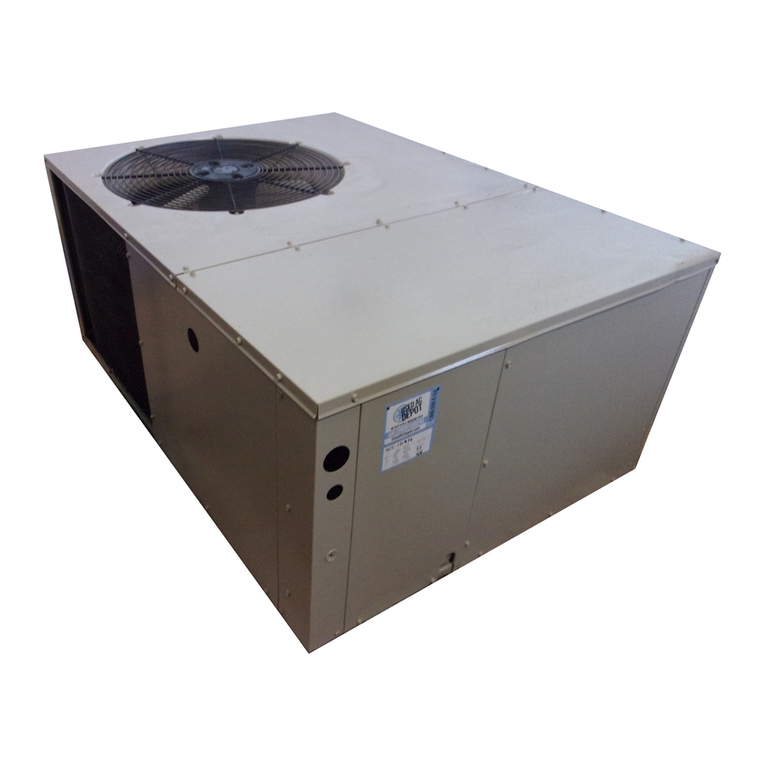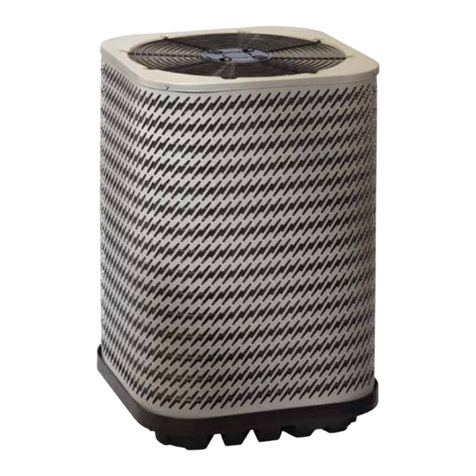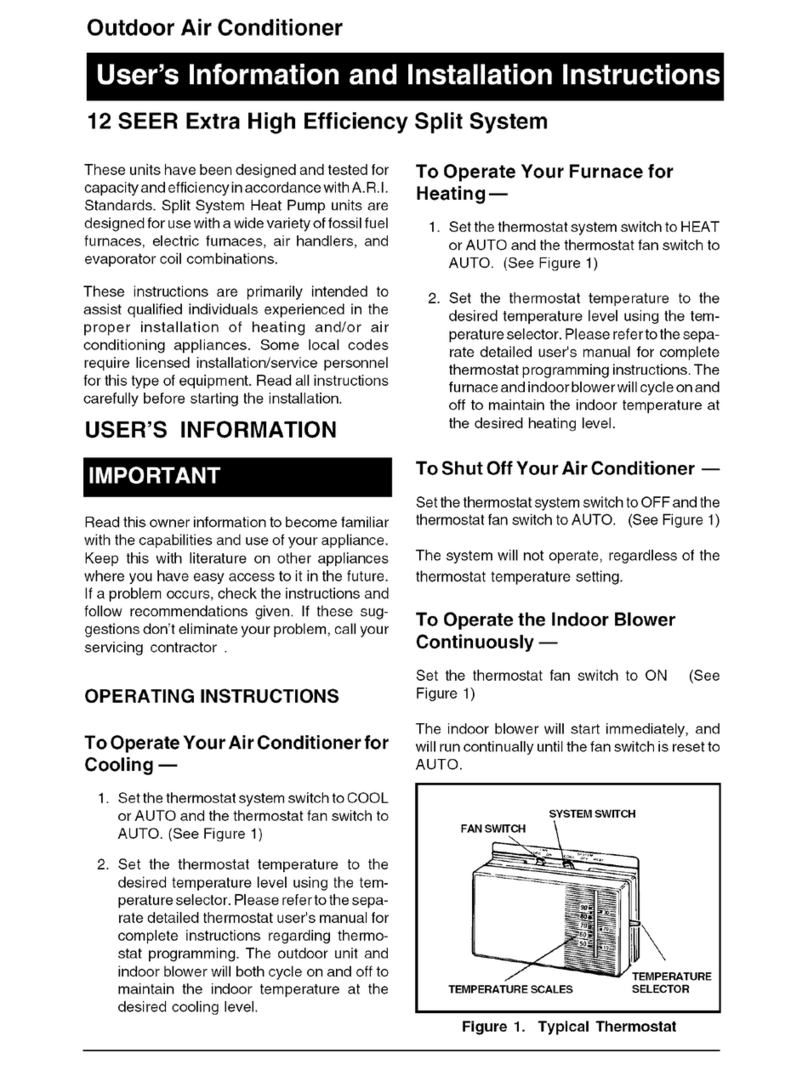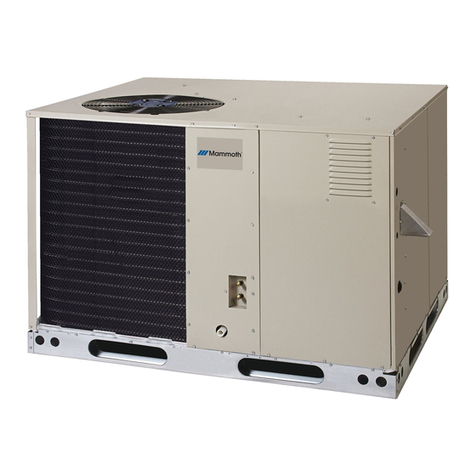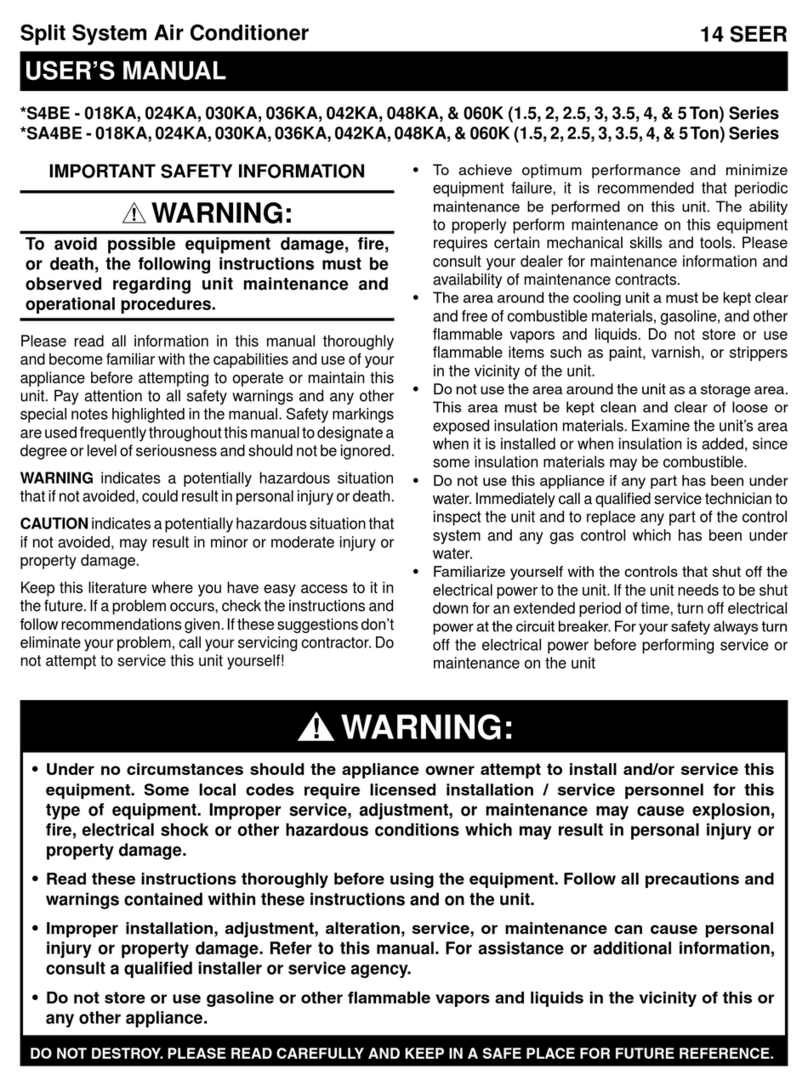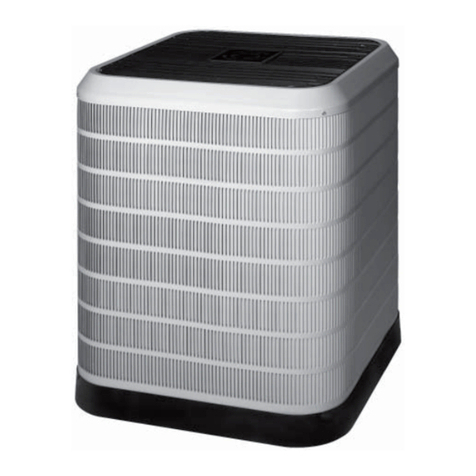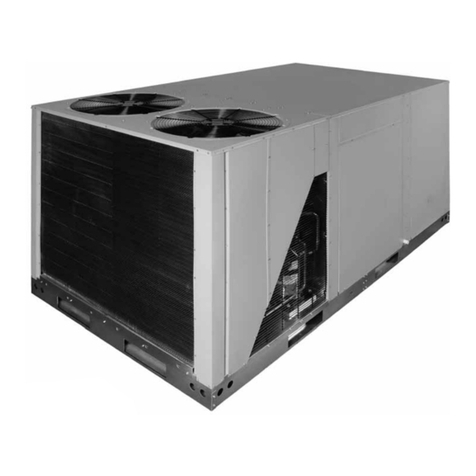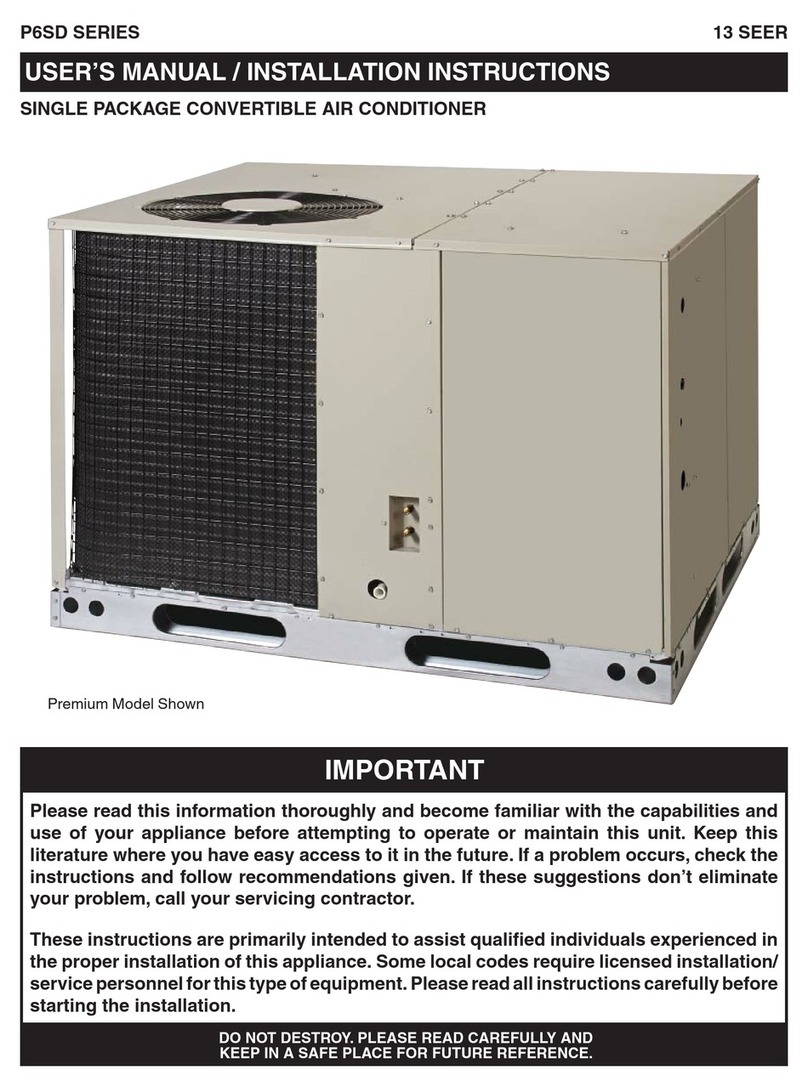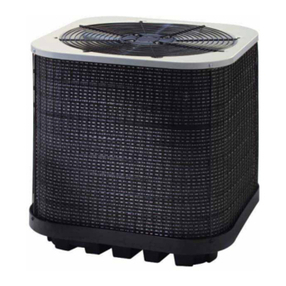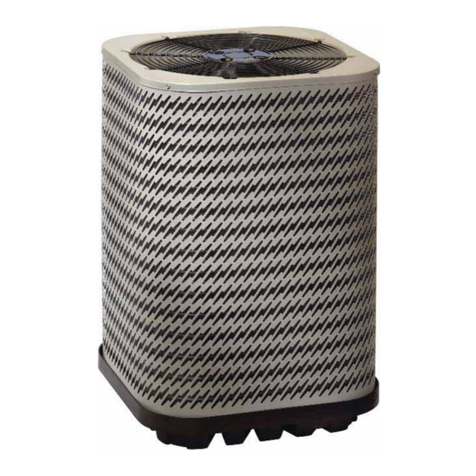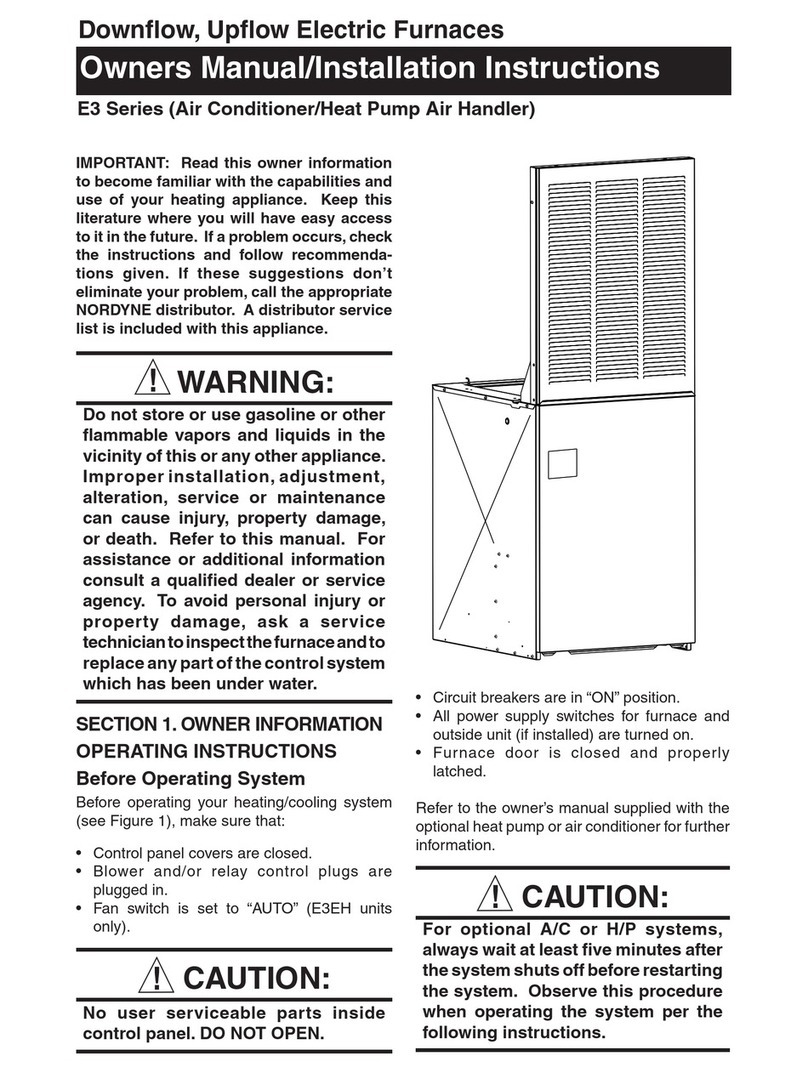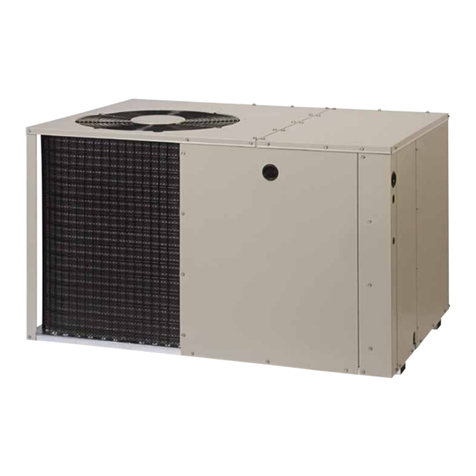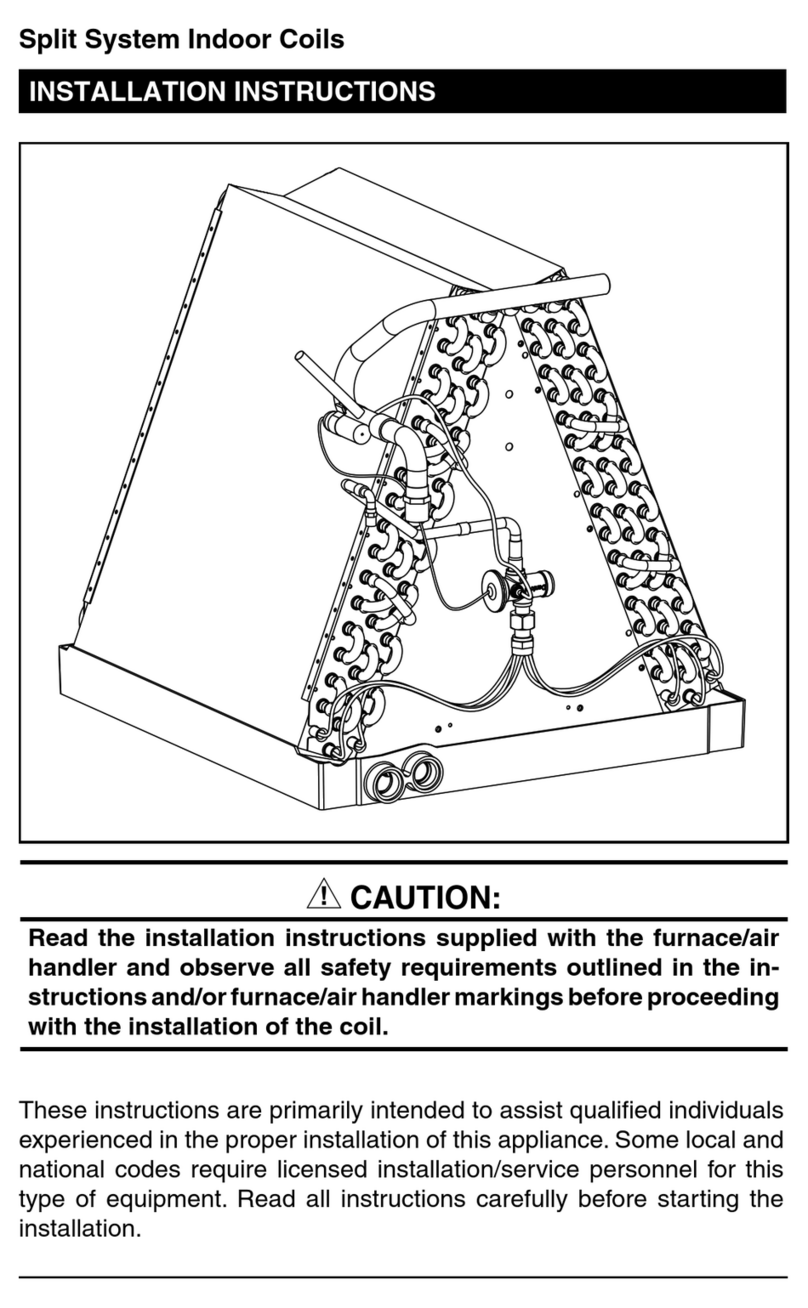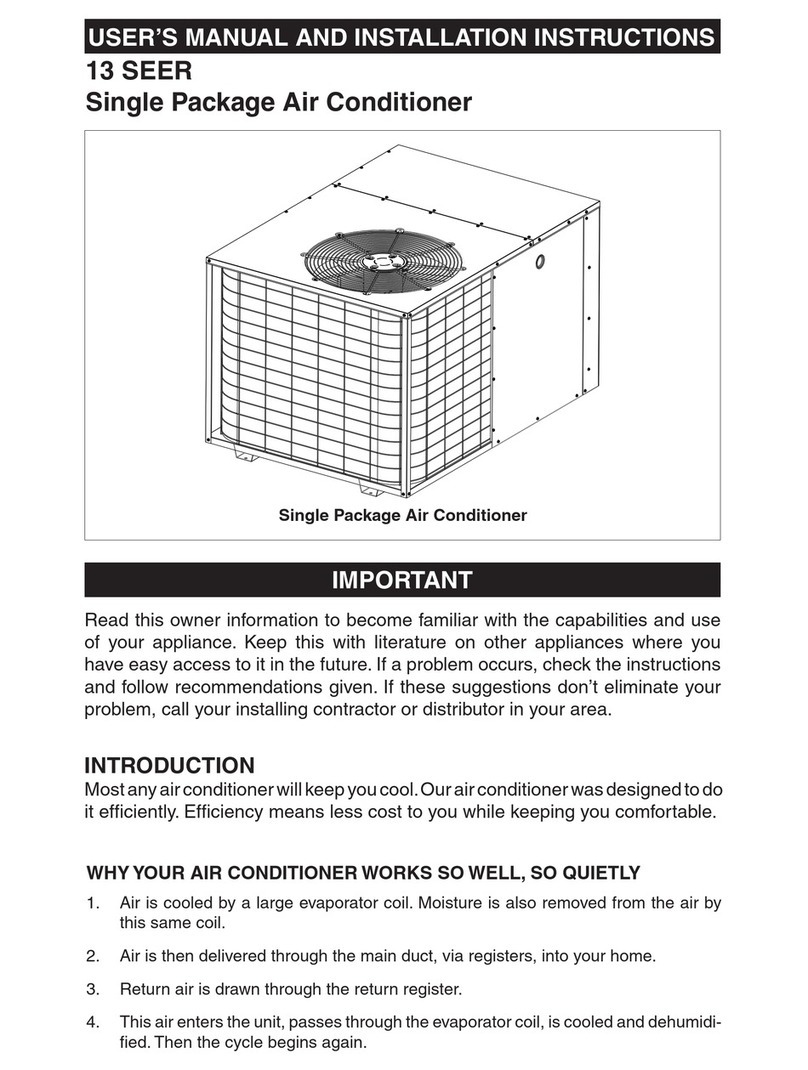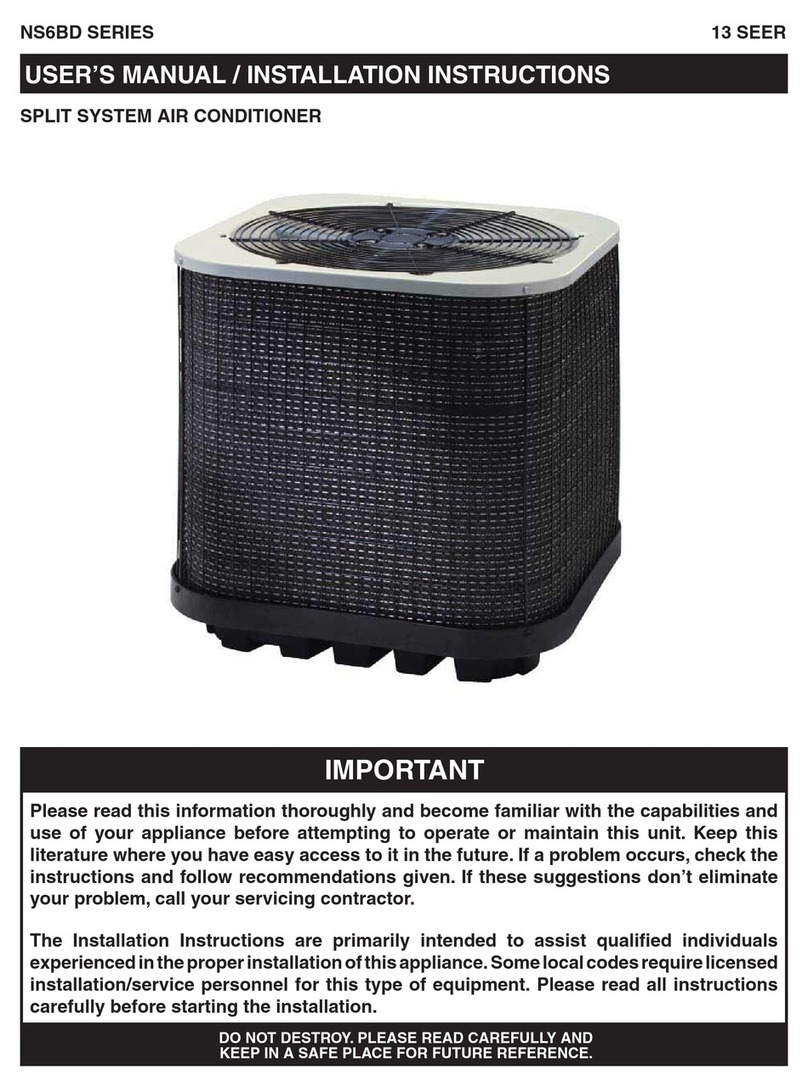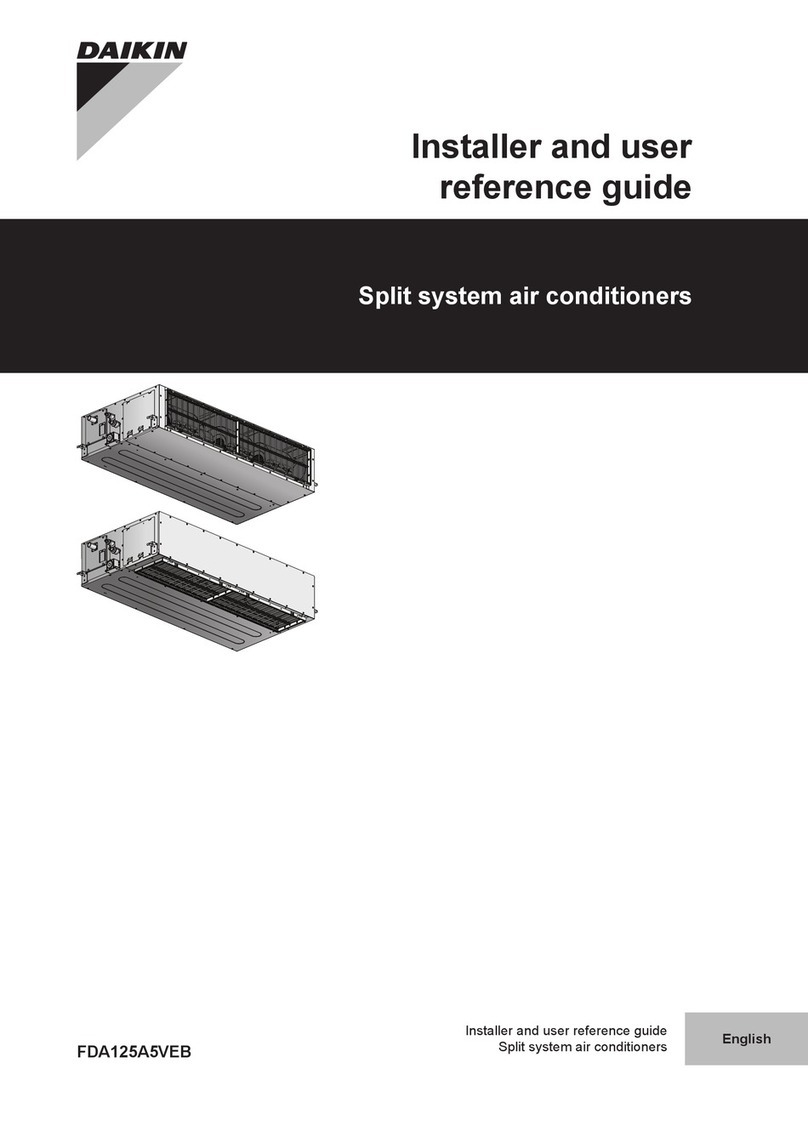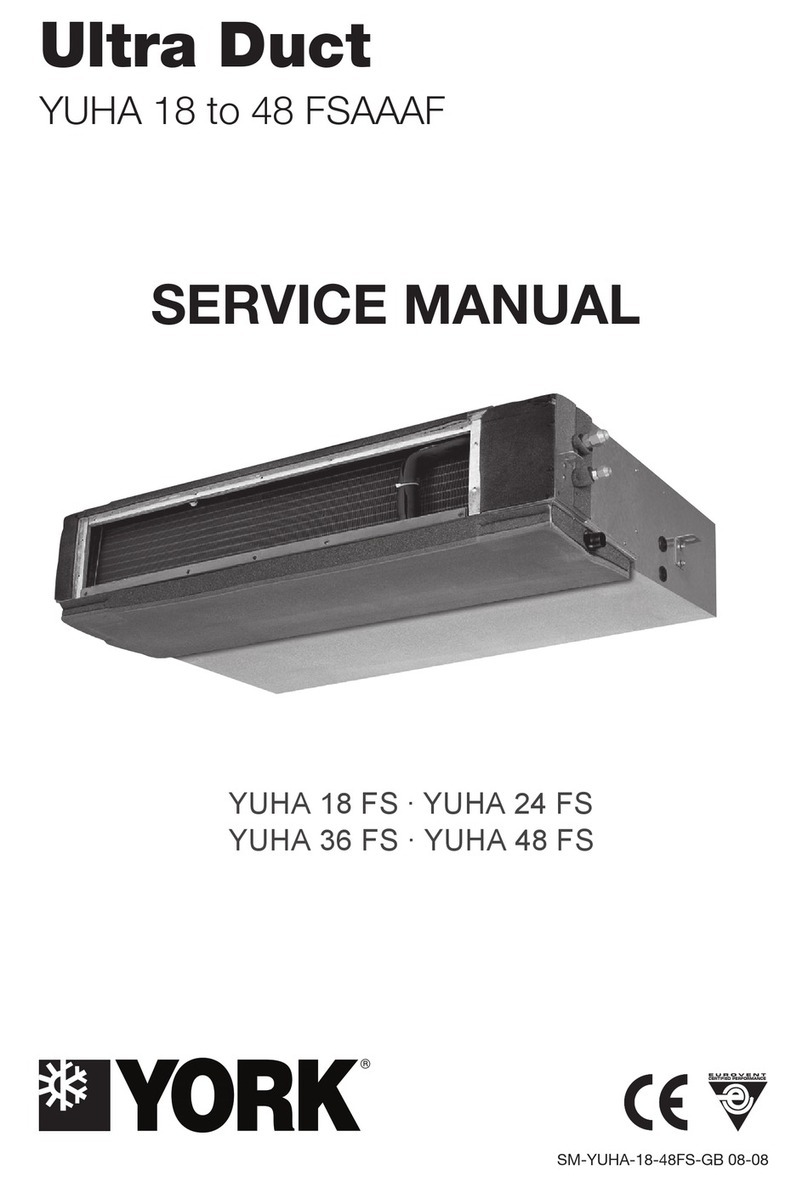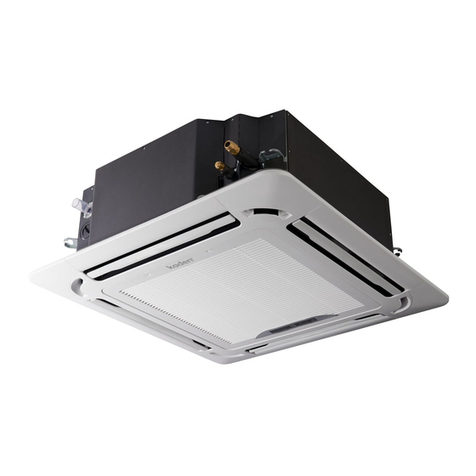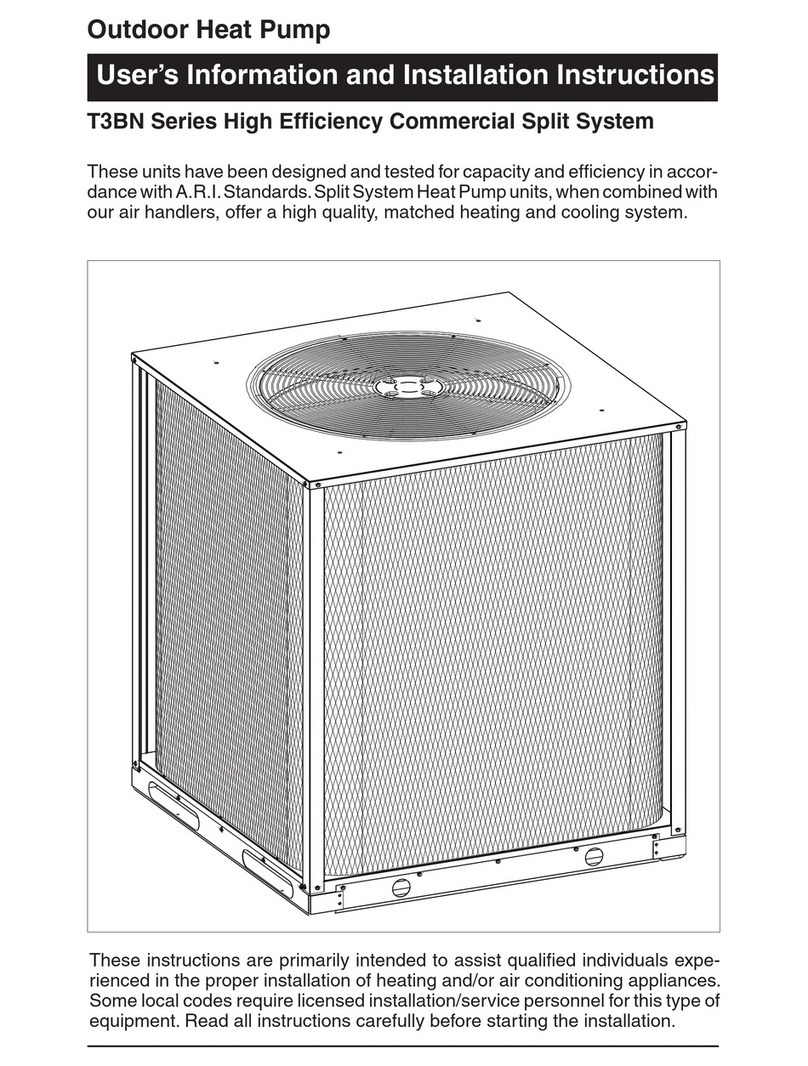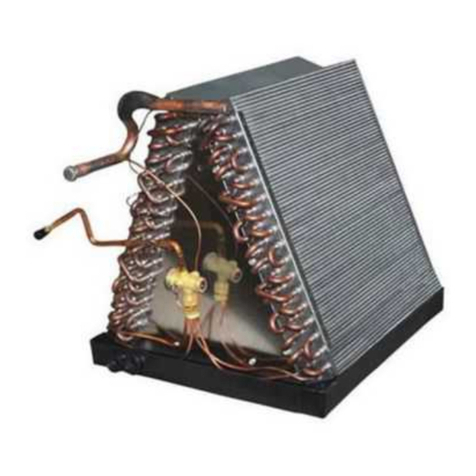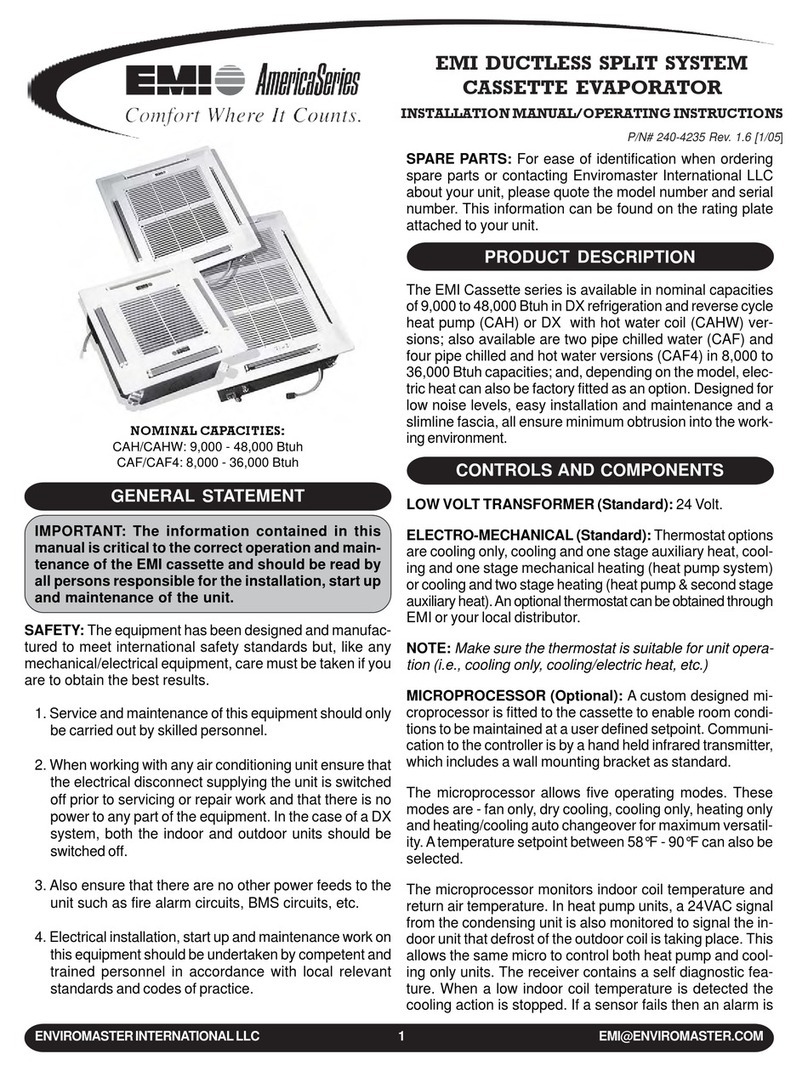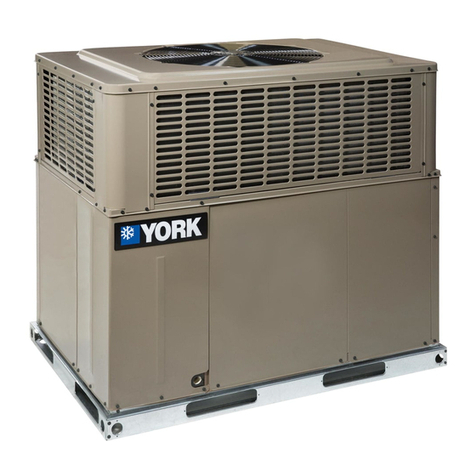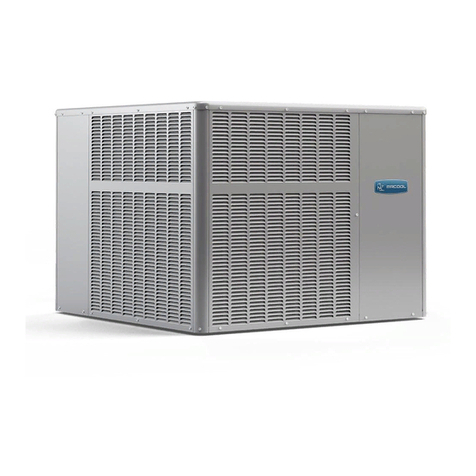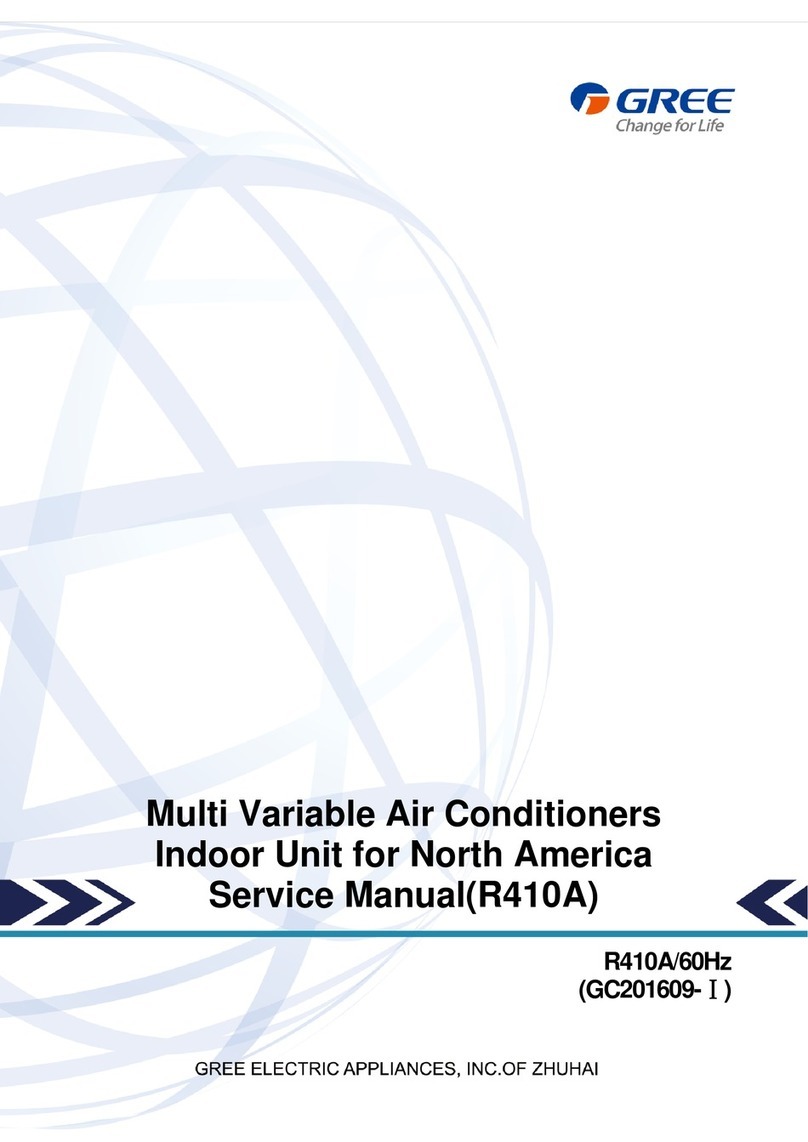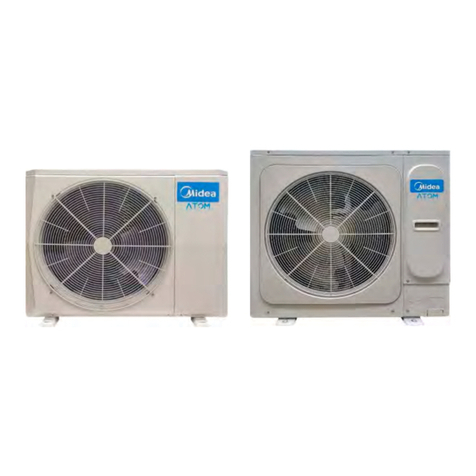
6
Whenahomeisnotequippedwithamake-ready
kitbythemanufacturer,meansmustbeprovided
topreventsimultaneousoperationoftheheating
and cooling units. A heat/cool thermostat is
available for this purpose.
When installing this air conditioning system in
conjunction with a furnace, a damper must be
installedinthefurnacebaseassemblytoprevent
cold air being discharged around the heat
exchanger. Damage to the heat exchanger and
asphyxiation may occur if a damper is not
installed.
Checkwiththefurnacemanufacturerfordamper
requirements. Failure to install the required
furnace damper may invalidate code agency
listing and limited warranty on the furnace.
Figure 5. Supply Damper
WARNING:
Running a furnace with a damaged heat
exchanger could cause a fire or asphyxiation.
!
5. LOCATINGANDINSTALLINGTHESUPPLY
DAMPER(S)(SeeFigure5) DUCTING SYSTEM
DUCTREQUIREMENTS
The supply duct system, including the number and type of
registers, will have much more effect on the performance of
an air conditioning system than any other factor. The duct
must be sufficiently large to conduct an adequate amount of
air to each register.
THEAIRCONDITIONINGOUTPUTOFTHESYSTEMWILL
NOT COOL THE HOME IF THE AIR IS LOST TO THE
OUTSIDE THROUGH LEAKS IN THE DUCT SYSTEM.
ALSO,DUCTSWHICHARECOLLAPSEDORRESTRICTED
BYFOREIGNOBJECTSWILLPREVENTADEQUATEAIR
FLOW.
Note:Forhighlyresistiveductsystemsitmaybenecessary
to add an additional return air duct and or supply to
achieve maximum performance and prevent coil icing
and refrigerant flood back.
CONNECTING THE RETURN AND SUPPLY AIR
FLEXIBLE DUCTS
a. The supply duct for all units is twelve inches in diameter.
Thereturnductmaybe12"or14"diameterdependingon
unit size. (See Table on page 5)
b. Theflexibleductscanbeconnectedtothecorresponding
fittingswiththeclampsprovidedwiththeducts. Note: All
connections should be leak tight or a loss in cooling
capacity will result.
c. The flexible ducts may be cut to the required length, see
instructions packed with duct. Keep all ducts as short
and straight as possible. Avoid sharp bends.
d. Ducts may be spliced with sheet metal sleeves and
clamps. (See Ducting Installation Accessories below.)
e. Oncethe innerductisconnectedto theproperfitting, the
insulation and plastic sleeve should be pulled over the
connection and clamped.
f. For double-wide homes or for special applications, a Y
fitting is available to divide the supply air so it can be
ducted to different areas of the home for more efficient
cooling. Note: The Y fitting should be insulated for
maximum performance.
CAUTION:
!
When locating the supply damper(s), carefully check floor
joists,axles,wheels,andframemembersthatcouldinterfere
withtheinstallationofthedamperorflexibleduct.Ideally,the
damper should be located in the bottom of the main duct,
forward of center of the home, at least three feet from the
nearestregister. Theroundsupplyopeningintheslantedside
ofthedampershouldfacethesideofthehomewheretheair
conditionerislocated. To locate the center of the heatduct,
first cut a small hole in the fiberboard below the duct at the
desired location. After locating the duct center, cut a hole
approximately 3/4" larger than the damper opening in the
fiberboard. Cut a 9-1/8" x 13-1/8" hole in the duct and bend
overalltabsflatontheinsideoftheheatduct. Afterinserting
thedamperintotheduct,bendoveralltabsflatonthe inside
oftheheatduct. Sealtheopeningbetweenthefiberboardand
damper or flexible duct.
















